2018 Arctic Cat M8000 Mountain Cat Review + Video
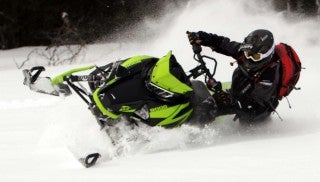
Refinements, Weight Loss and New Motor Make the Mountain Cat Modern in All-ways
The crew at Arctic Cat’s mountain team’s field-test headquarters gives each new “top secret” M8000 a code name from either a Greek god, a movie character or some military code name like ZRT – Zulu Roger Tango.
Engine: 794cc 2-stroke Twin
Power: 160 horsepower
Track: 15 x 153 or 162 x 3.0 Power Claw
MSRP: US$14,199/C$5,849
In early February 2016, while riding the pre-production 2017s, unbeknownst to us, we rode the 2018 Mountain Cat (MC). It was hiding in plain sight and was discussed with its code name. Yes, we know that code name and we keep it to ourselves because the 2018 Mountain Cat we rode in January 2016, and January and February 2017, does not match its undercover operative name.
For the here and now, we’ll just call the 2018 M8000 Mountain Cat 153 and 162 as “Arrived,” a term stamped out for Wall Street traders who finally broke through the ceiling and are money makers.
Year after year, as we rode the ProClimb M8000, we kept hoping for that fire to light inside Arctic Cat. It once burned hot for yesteryear’s 1M, King Cat, M7 and M8. Since its inception in the ProClimb chassis, the M8000 was just… OK. It had a reputation for being heavy, for over transferring, for having blunt surfaces that kept it from slipping across sidehills, and for not being true to its heritage just spoken of. Many Cat faithful abandoned it, yet some hardened loyalists stayed with the M8000 pouring much money into the M8000 to make it compete – hopefully – against its competitors, mainly Polaris’ former Pro-Ride Pro-RMK and current AXYS Pro-RMK. Two characteristics the M8000 always had in its favor though, were its iron-tough Suzuki motor and chassis.
Year after year when we declare our King of the Mountain snowmobile (KOM), which is Snowmobile.com’s Mountain Snowmobile of the Year, the M8000 never achieved such status – ever. Several times though, it has been our Most Improved Mountain Snowmobile of the Year. The M8000 was always improving, but really never gaining. This year the Mountain Cat might reach that summit and be crowned KOM; of course Ski-Doo’s Gen 4 Summit X 175 and its sibling, the Freeride 165 may have something to say about that. Follow us here to learn what develops.
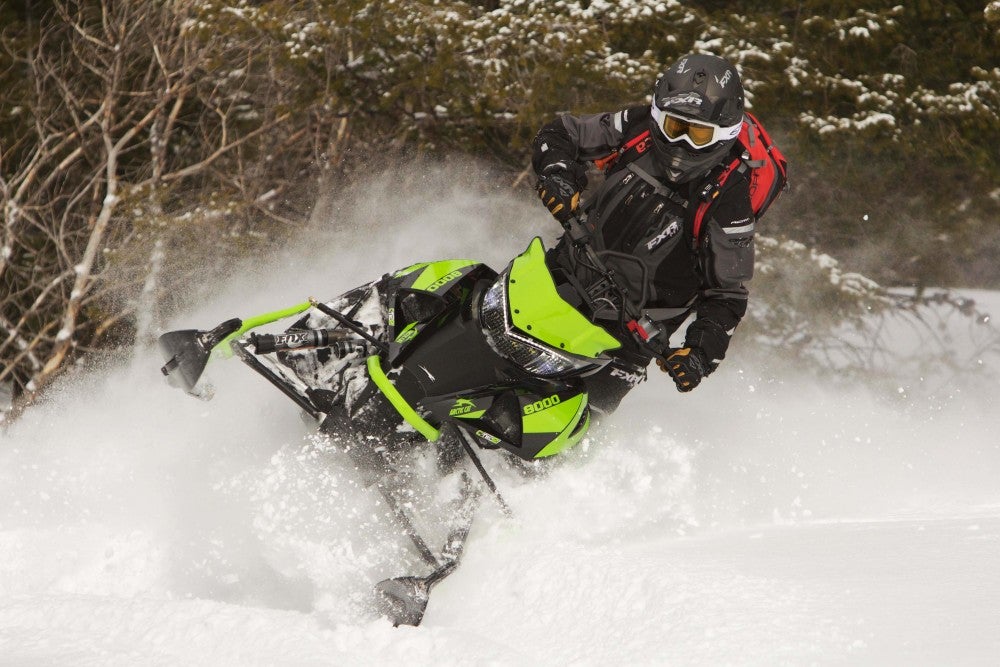
A narrow ski stance, easy balance and a chassis that is lively, the Mountain Cat for 2018 is not the M8000 of the past; it is modern and “arrived.”
For model year 2017, the high vis green ACAT Mountain Cat 153 and 162 were remarkable snowmobiles. So under appreciated by the mountain public that we thought we needed to protest, riot and burn some buildings to drive attention to it; it was that good. But, let’s concentrate on the Mountain Cat for 2018.
What You Need to Know
New to Arctic Cat’s M8000 line is the C-TEC 800 two-stroke twin-cylinder electronic fuel injected (EFI) motor that replaces the Suzuki motor. This clean burning motor was designed by the same engineer who designed the Suzuki-built 800 H.O. motor, and mirrors the technology the C-TEC 600 uses. The C-TEC 800 motor has the same bore and stroke as the Suzuki motor, but relies on clean-burn technology.
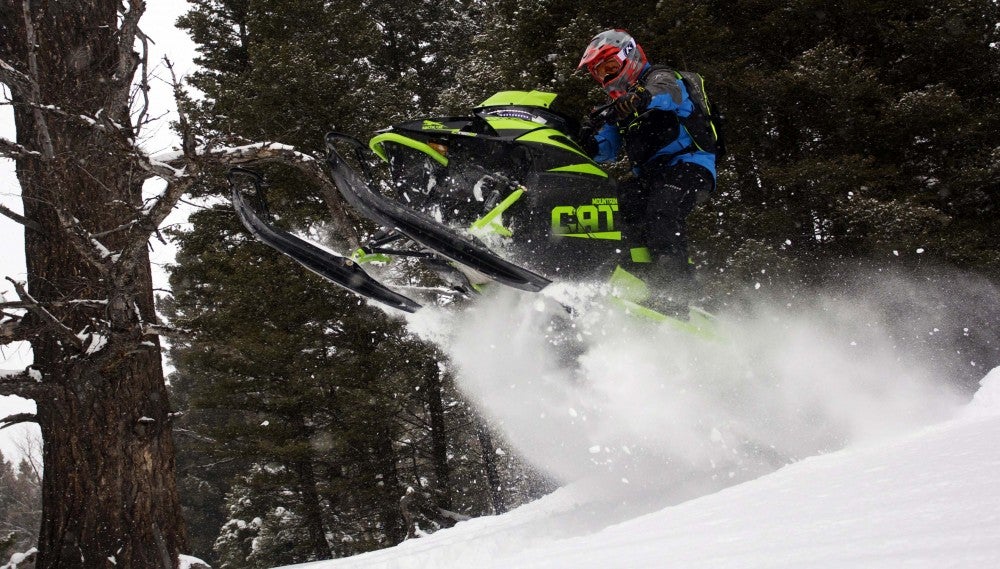
When taking on large deadfall trees, the new domestic built motor from Arctic Cat digs deep and low with mountainous grunt to launch the Mountain Cat up over the large obstacles.
The C-TEC 800 uses Cat’s Dual Stage Injection (DSI) where at low engine speeds, fuel is injected directly into the combustion chamber. As motor RPM climb, a fuel-oil mixture is injected into the crankcase via the motor’s transfer ports; this gives added lubrication to essential motor components. We learned this more efficient lubrication comes by injecting oil with the fuel; oil is injected by an electronic pump, rather than a mechanical pump. Thus, the amount of oil the motor receives is dependent on motor load, throttle position and air density.
In mid-February, we received an Early Release 2018 M8000 Sno Pro 153, a beautiful gray and green M in the refined ProClimb chassis now coined “Ascender.” This early-release 2018 M8000 Sno Pro had all the refinements from the 2017 Mountain Cat: narrowed-in lower panels and runningboards, dropped and rolled chaincase and opened-up toe wells. Then for the 2018 early release M8000 Sno Pro, ACAT further tightened in and smoothed out the hood and lower panels. Along with this, Cat also changed the angle the nose approaches the snow; it’s now not so blunt.
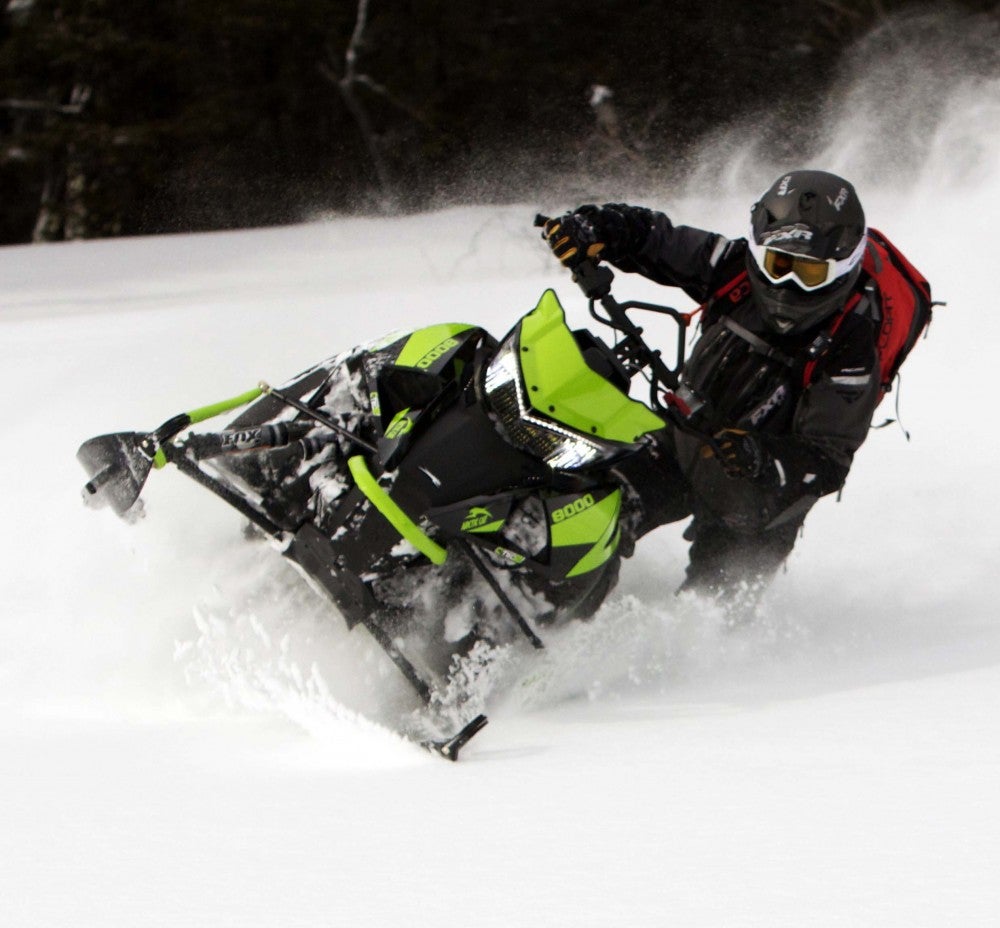
Wrong foot forward carving is easy with the Mountain Cat’s narrow front end, open toe wells and narrow runningboards. The Mountain Cat for 2018 has a sweet balance point that was engineered in to avoid boondocking missteps. Riders must be as alert as the Ascender-chassis Mountain Cat is.
The 2018 Mountain Cat takes what we learned from the Early Release 2018 M8000 Sno Pro, but more. Impressively, the 2018 MC is lighter than the Early Release, which was already lighter than the 2017 Mountain Cat.
Here in a snap shot, are Cat’s own marketing and sales claims for the Mountain Cat:
- “NEW 8000 C-TEC2™ 2-Stroke Engine – designed and built by Arctic Cat, these engines provide up to 30% reduction in oil consumption, 36% increase in low-end torque and 18% increase in midrange torque
- “NEW Next-Gen body panels provide a 10% narrower profile and moves the rider 2” forward for better side hilling and improved maneuverability
- “NEW 1” narrower running boards for even more side hill improvement
- “NEW dropped driveshaft, which lowers the approach angle to get you on top of the snow
- “NEW weight savings up to 15 lbs.
- “NEW FOX FLOAT® 3 QSL rear shocks for improved deep snow flotation.”
How It’s Done
Let’s address the 15-pound weight savings. The Mountain Cat sheds its weight in various ways. The MC uses an aluminum drive shaft; the shaft mated to the track drivers. “The new drive shaft is an aircraft grade, heat treated aluminum alloy. It is an extruded hollow that was optimized for strength in torsion and bending; it is three-pounds lighter than last year’s,” according to Andy Beavis, Arctic Cat Product Team Manager, Mountain Snowmobiles.
Also helping to shed a few pounds is the hollow driven shaft. “The driven shaft is a larger diameter, gun-drilled hollow shaft. It is as strong as last year’s shaft and two-pounds lighter. It has a larger spline on the chain side, due to the larger diameter, and it takes different sprockets [than last year’s],” Beavis states.
Third is a lighter fuel tank which trims another five pounds. Other minor weight savings come by way of lighter panels and the shaved running boards.
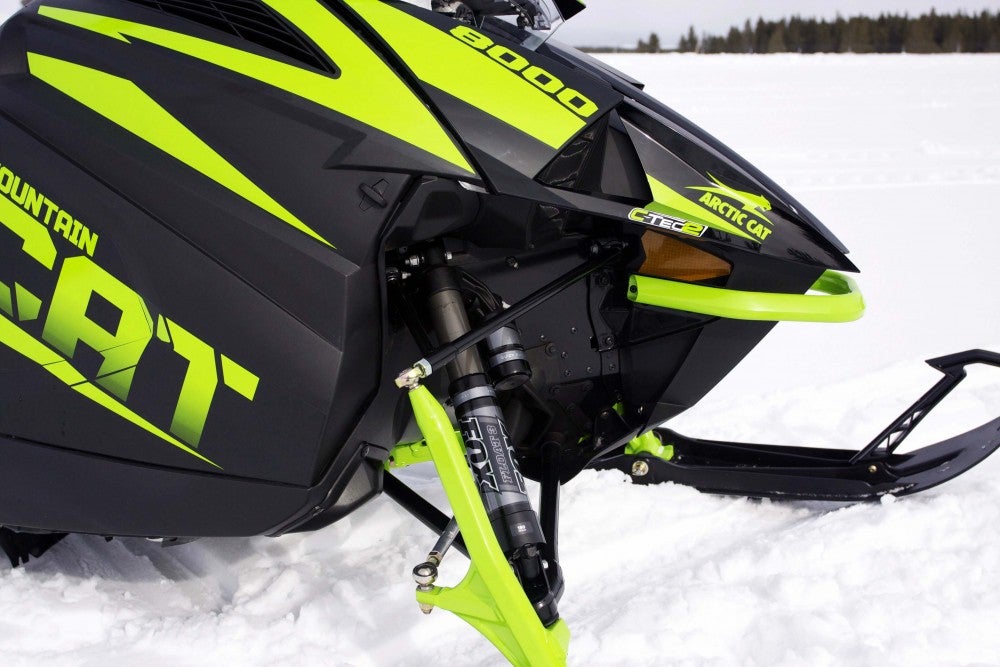
Loaded with Fox Float 3 QS shocks, the Mountain Cat front end can be easily set to 1) soft, 2) medium and 3) firm with a three-position dial (selector). Select positions 2 and 3 may be the most desired.
The Fox Float 3 QSL shock (QSL for Quick Switch Lockout) as the rear most shock allows the driver to set the rear suspension for cushy float and max weight transfer, which is position 1; in-between for reduced weight transfer and somewhat locked down, position 2; and full lock down for almost zero weight transfer for hillclimbing in deep powder. Position 3 keeps the nose planted which in turn keeps the track and suspension parallel to the hill. By controlling – minimizing – tail walk, the MC will climb and sidehill much better than its predecessors, and will challenge the Pro-RMK from Polaris and the Gen-4 Summit X from Ski-Doo as the hill climb master. However, in the lockout position, if a nuclear hit occurs to the rear skid, the lockout will absorb the hit and through a bypass, the shock will collapse therefore allowing the suspension to pivot up into the tunnel – this to protect the rear skid, tunnel and the driver/operator.
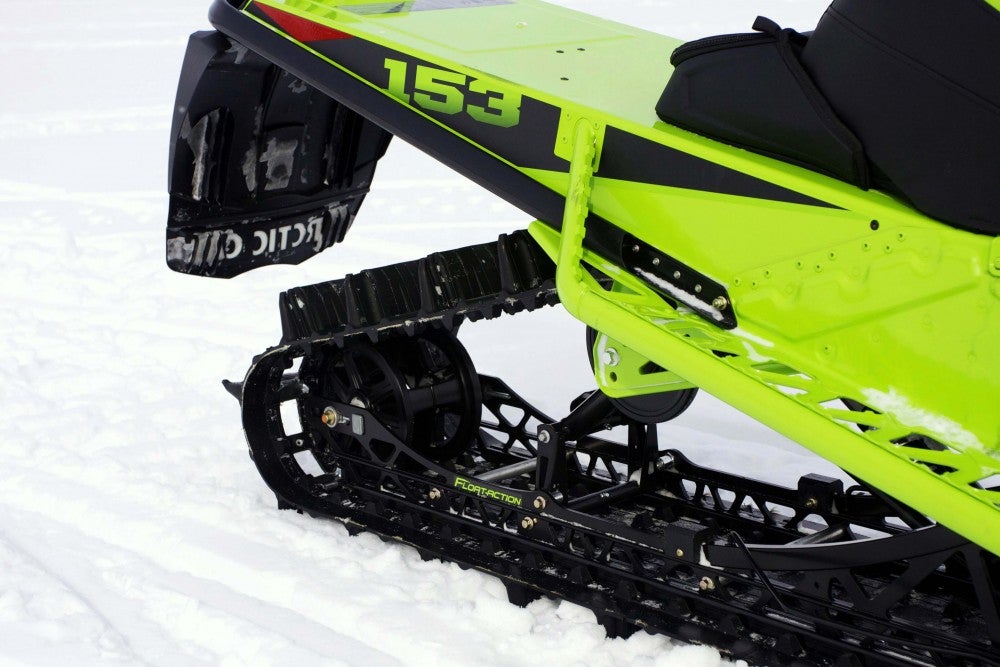
The Float-Action rear suspension and Power Claw track with three-inch paddles give the Mountain Cat the lift and float steep-and-deep riders desire when taking on the boondocks.
Rounding out the full shock package, the skis stick to a mountain via Fox Float QS3 (Quick Switch 3) shocks The front track shock also a Fox Float QS3. You can read our full tech article on the QS3 by clicking here. The beauty to these lightweight shocks is that an owner can tune their MC to the terrain, snow condition, and body weight from trail cruiser soft, mogul pounding medium, and snocross racer hard. No 20-position thinking-it-through.
The new Team Rapid Response II driven clutch along with the Team Drive clutch tackle belt fade by squeezing the belt in a manner that keeps the belt relatively cool. Through the M8000’s history, it had a known problem with belt fade due to heat. The engineers at Cat made addressing this a priority as they worked with Team Industries to develop a drive and driven clutch, which is proprietary to Arctic Cat that keeps a belt cooler. Part of this is a roller in the drive clutch which, when the belt drops into the lowest position, rests on a roller. Belt creep and squawk is non-existent.
Beavis reports to Snowmobile.com, “The purpose of the idler bearing in the new Arctic/ Team Drive clutch is to remove the need for belt deflection adjustments, lower effective starting ratio, and improve drive system response and consistency. It does this by running the belt tight at idle. The driven clutch requires no shimming for deflection and continues to shift the belt as far out as needed as the belt breaks in and wears.”
To add to the aforementioned, Beavis further states, “The drive and driven clutches are both able to use the same tuning components as last year’s. The secondary clutch is the same as last year’s except for not having a belt deflection adjuster, and having a slightly wider reverse notch in the cam.”
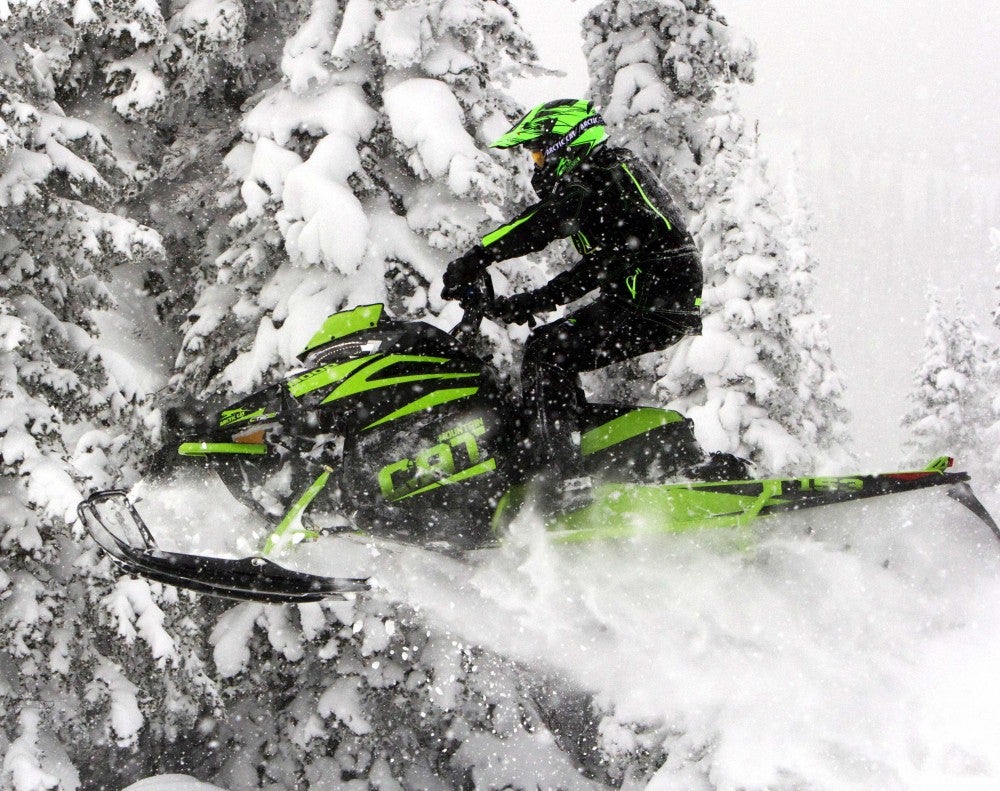
Even on the snowiest days, the Mountain Cat is alive, not one to shy away from harsh conditions. The Mountain Cat for 2018 delivers superb performance from its new motor, new Team clutch configurations and narrow – super narrow – profile.
Assisting clutch performance and lowering belt temperatures is the Torque Control Link (TCL). “The TCL is an aluminum plate connecting the driven shaft to the engine to help maintain clutch center-to-center distance for optimum clutch performance and consistency. It’s been used since 2012 and was further optimized last year to remove 1.25-pounds,” reports Cat’s M-line lead Beavis.
To round out all the points on weight savings, Beavis makes this point the MC is a premium mountain snowmobile, but the other M8000s receive benefits, which we will cover in individual stories: Sno Pro and standard M8000 and M6000 Sno Pro. Here what Beavis declares, “All the two-stroke mountain sleds for 2018 benefit from the new clutches and new shafts. They also benefit from the new lightweight mountain brake system with new disk, caliper and pads saving an additional 1.5-pounds. They also have the new composite upper steering support saving an additional 0.75-pound. All 2018 two stroke mountain sleds come in the Ascender platform with the additional weight savings and mountain drive system first used on the 2017 Mountain Cat. Each 2018 model is about 15-pounds lighter than 2017. The 2018 Mountain Cat and Sno Pro models benefit from the new lightweight fuel tank that is 5-pounds lighter rotomolded material that holds ½-gallon more fuel and has two-quart additional storage in the rear trunk area.”
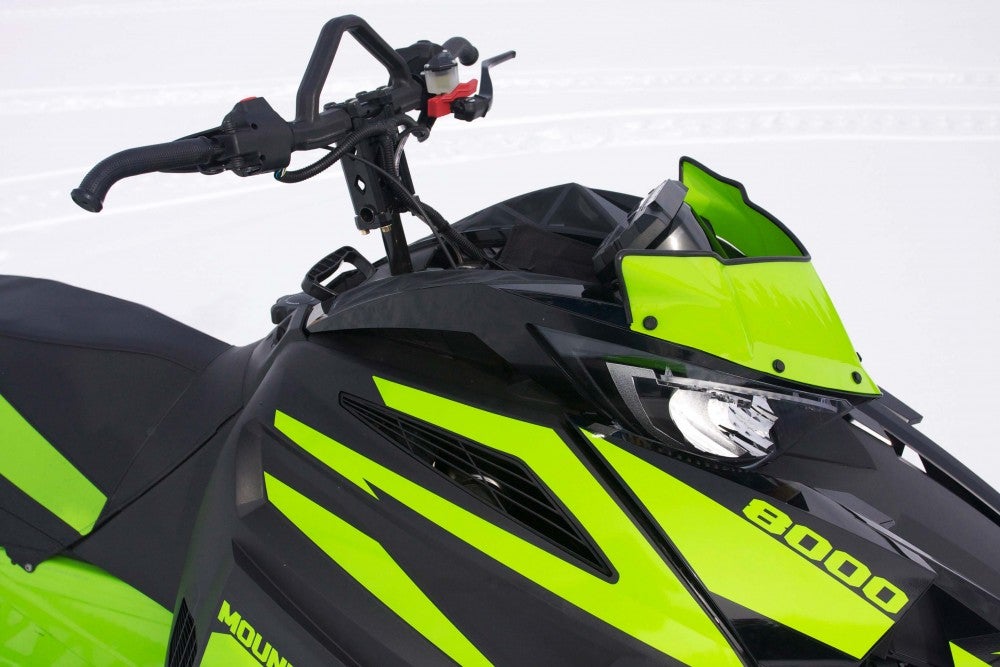
With its vertical steering post, minimalist controls, and mountain strap, the Mountain Cat comes equipped for standup riding. The MC’s instrument pod gives engine and elevation vitals needed for informative and safe mountaineering.
Let’s talk a little refinement: hood latches. “The new side panel latches are custom designed ¼-turn fastener system designed for ease of use with gloves and allow easy access to all service points under the hood. Underneath the side panels, the hood is held on with two ¼-turn Zeus fasteners and one screw in the lower front nose. The screw is needed to maintain the integrity of our air intake system under all conditions,” according to Beavis. Translation: freaking easy on and easy off.
The Mountain Cat 153 and 162, the only lengths available, with the Power Claw three-inch paddle track, is the M8000 that Arctic Cat should have brought out years ago. These two MCs are as light and lively as any mountain snowmobile we have ridden. The narrow panels, smoothed out lines, and weight loss, deliver to the rider a chassis that is alive. When we first evaluated the Gen-4 REV Summit X, we were amazed at how quick it was (and is still) through the handlebars. Ski-Doo did a fabulous job. Arctic Cat, with the improved chassis – Ascender – may have built a snowmobile that is slightly quicker handling than the Gen-4 Summit X. Time will tell. But from our experience, drivers need be alert. The MC is so responsive that with little though or input, it’ll cut out your thoughts.
With the Quick Switch lockout rear most shock set to 2 or 3 (which is the locked position), the MC held its nose down – skis mostly planted – and climbed flat and steady. Furthermore, in lockout, the MC holds a sidehill cut without washing out. Washing out is caused – mostly – by the snowmobile wanting to tail walk, or pitch its nose up the hill; the MC (in position 3) would not wash out. Furthermore, with the narrowed-in chassis – narrow running boards, smoothed and tightened panels, and pushed forward toe wells – the MC would not, will not, panel out, thus leading too, to washing out.
The MC with its light and narrow chassis, new bottom-end grunt motor, is both super glued to a mountain, while being lively and free.
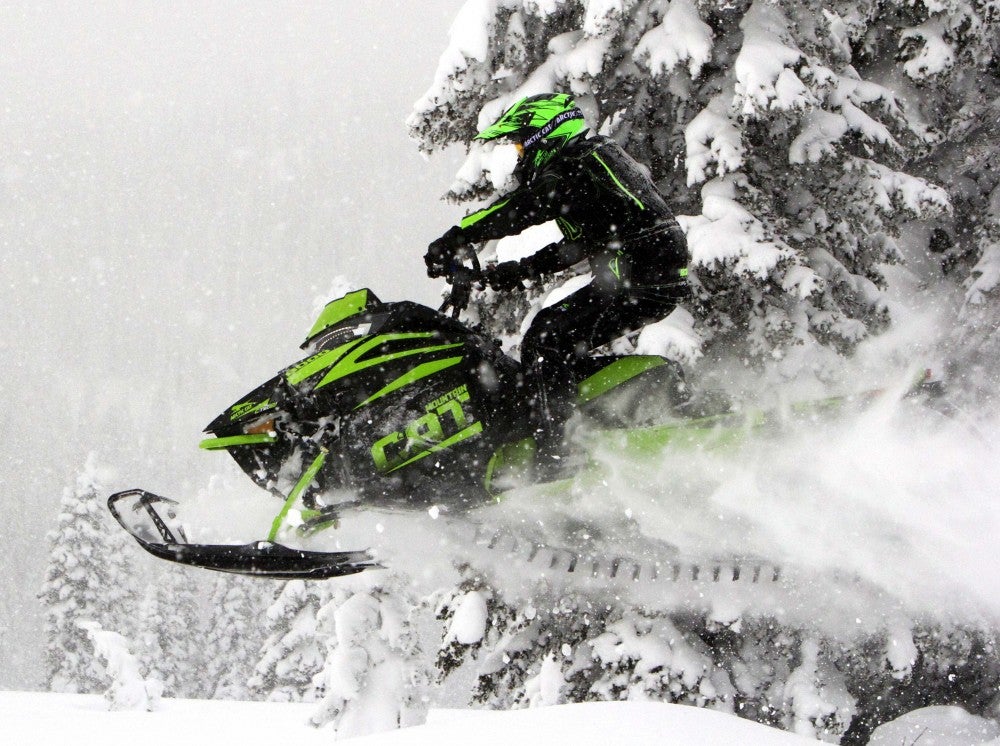
With its balanced and new lighter chassis, the Mountain Cat is destined to be a new leader on the mountain for 2018.
The Mountain Cat is a reborn snowmobile. It is Cat’s best to date and we believe it may be the deep-powder winner for 2018. Those who drive Pro-RMKs and 850 Summits may need be on the lookout, as a 2018 Mountain Cat may swat you off the mountain.




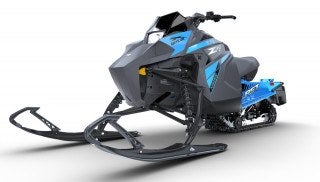
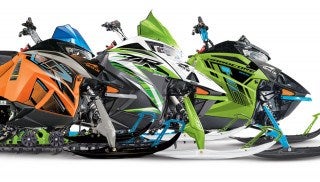


 Your Privacy Choices
Your Privacy Choices